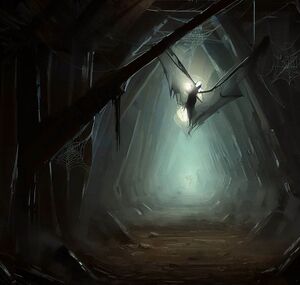Attention: Difference between revisions
imported>Jacob Robertson |
imported>Jacob Robertson |
||
| Line 44: | Line 44: | ||
=== Presence === | === Presence === | ||
Presence is about being fully here and now, not lost in thoughts of the past or future. It involves directing your full attention and consciousness to the activities and experiences of the current moment. Cultivating presence is key to living each moment to its fullest. | Presence is about being fully here and now, not lost in thoughts of the past or future. It involves directing your full attention and consciousness to the activities and experiences of the current moment. Cultivating presence is key to living each moment to its fullest. | ||
=== Concentration === | |||
Concentration pertains to the ability to direct your mental resources to a specific point of focus, resisting the pull of external stimuli or wandering thoughts. Practicing concentration can lead to improved attentional control, enabling you to be fully present and immersed in your current experience. It is the cornerstone for most meditative practices and a critical element for living in the present. | |||
== Other Lenses == | == Other Lenses == | ||
| Line 50: | Line 53: | ||
=== Tranquility === | === Tranquility === | ||
Tranquility is a state of calmness and peacefulness. It is about cultivating serenity within oneself, regardless of the external circumstances. Through mindfulness and meditation, you can learn to manage stress and maintain inner peace, enhancing your ability to stay focused and attentive to the present moment. | Tranquility is a state of calmness and peacefulness. It is about cultivating serenity within oneself, regardless of the external circumstances. Through mindfulness and meditation, you can learn to manage stress and maintain inner peace, enhancing your ability to stay focused and attentive to the present moment. | ||
=== Continuous Mindfulness === | === Continuous Mindfulness === | ||
Revision as of 15:08, 9 August 2023
| Beacon: Attention | |
|---|---|
| Credo | Experience the Now |
| Lenses | Mindfulness Non-Judgment Presence Insight Intention |
Overview
Credo: Experience the Now
"Experience the Now" embodies the foundational essence of mindfulness practice, calling us to immerse ourselves in the immediate, unfolding present. It is not about ignoring the past or future, but about anchoring ourselves in the rich tapestry of the current moment. This allows us to experience life more fully, with heightened awareness and clearer perception.
By embracing this credo, we not only invite a sense of calm and clarity into our lives but also develop a deeper connection with the world around us. It allows us to navigate our daily lives with greater attention, less reactivity, and an open heart.
In the realm of Everyday Enlightenment, "Experience the Now" is tied to the Beacon of Attention, guiding us towards an enriched life, free from the confines of past regrets and future anxieties. Instead, we cultivate an authentic existence in the immediate, ever-changing present. Every moment becomes an opportunity to be truly alive and engaged with our experiences as they unfold.
Our journey towards embodying this credo will undoubtedly pose challenges and require commitment. Yet, the rewards of such mindful living—heightened awareness, increased calm, and a profound sense of connection with the world—are well worth the effort.
Primary Lenses of Attention
Lenses, in the context of the Beacons of Everyday Enlightenment represent more specific concepts and practices through which we can understand the rich meaning of each Beacon. There are Primary Lenses, which are the most commonly understood and most robust meditative concepts, and there are Other Lenses which are a collection of other closely related ideas for that Beacon.

Attention, as a Beacon of Everyday Enlightenment, possesses multifaceted aspects that can be better understood through distinct Lenses. These lenses provide us with different perspectives on how to focus, be present, and fully experience each moment in our lives. Each lens gives us a unique way to explore and understand the complexities and subtleties of the concept of Attention. Together, they shine a comprehensive light on this crucial path to mindfulness and presence in the now.
Mindfulness
Mindfulness is a central theme of Attention. It refers to awareness of our thoughts, feelings, bodily sensations, and the surrounding environment. Mindfulness involves a kind of nonjudgmental observation, in which each thought, feeling, and sensation is acknowledged and accepted as it is. By cultivating mindfulness, one can develop a greater sense of presence, clarity, and equanimity. This attentive presence fosters a greater understanding of the nature of consciousness and is critical to the other Lenses of Attention.
Non-Judgment
Non-Judgment means experiencing the present moment as it is, without labeling it as good or bad, right or wrong. In practicing non-judgment, you allow yourself to experience life fully, without the filter of preconceived notions or biases. This Lens also helps in cultivating an accepting attitude towards your own thoughts and emotions, thereby enriching your overall experience of the present moment.
Presence
Presence is about being fully here and now, not lost in thoughts of the past or future. It involves directing your full attention and consciousness to the activities and experiences of the current moment. Cultivating presence is key to living each moment to its fullest.
Concentration
Concentration pertains to the ability to direct your mental resources to a specific point of focus, resisting the pull of external stimuli or wandering thoughts. Practicing concentration can lead to improved attentional control, enabling you to be fully present and immersed in your current experience. It is the cornerstone for most meditative practices and a critical element for living in the present.
Other Lenses
These Lenses are additional ways of learning and practicing Attention and help to round out what it means to Experience the Now.
Tranquility
Tranquility is a state of calmness and peacefulness. It is about cultivating serenity within oneself, regardless of the external circumstances. Through mindfulness and meditation, you can learn to manage stress and maintain inner peace, enhancing your ability to stay focused and attentive to the present moment.
Continuous Mindfulness
Continuous mindfulness is the practice of maintaining awareness and attention throughout all activities and moments of the day. By integrating mindfulness into your routine, you develop the ability to fully engage with the present moment. Continuous mindfulness leads to a heightened sense of being and living in the 'now'.
Absorption
Absorption refers to the state of being completely engrossed in the present moment, where your attention is so focused that you become one with your current activity. In such states, time may seem to stand still or fly by unnoticed. Cultivating absorption can enhance your quality of life as you fully experience and appreciate every moment.
Mind-Body Connection
The Mind-Body Connection involves recognizing and understanding the link between our physical sensations and mental states. It encourages tuning into bodily sensations as a way of anchoring ourselves in the present moment. This lens can deepen your understanding of the interplay between the mind and body, fostering holistic well-being.
Awareness of Thought Patterns
Awareness of Thought Patterns means being able to observe your own thoughts as they arise and evolve, without getting lost in them. This involves recognizing common themes, triggers, or cycles in your thought processes. By developing this awareness, you can prevent getting swept away by your thoughts, and instead, stay anchored in the present moment.
Alertness
Alertness refers to the quality of being awake, aware, and responsive to your environment. By cultivating alertness, you can improve your ability to quickly and accurately respond to changes in your environment, enhancing your overall attentiveness to the present moment.
Overcoming Distraction
Overcoming Distraction involves learning to manage and mitigate the impact of both internal and external disruptions to your focus. By improving your ability to resist distractions, you can maintain your focus on the present moment, enhancing the quality of your experiences.
Perception Clarity
Perception Clarity is about developing a clear and unbiased understanding of your experiences. By seeing things as they are, not as you think or expect them to be, you can deepen your connection with the present moment.
Disciplined Focus
Disciplined Focus refers to the cultivation of a strong and steadfast attention, able to maintain focus despite distractions or discomfort. It's a commitment to keep bringing your attention back to the present moment, enhancing your capacity for continuous mindfulness.
Acceptance
Acceptance involves embracing the present moment as it is, without trying to change, avoid, or resist it. By accepting what is, we reduce stress and dissatisfaction caused by resisting reality. This can greatly enhance your ability to stay mindful and attentive to the present moment.
Shadows of Attention

The Beacons of Everyday Enlightenment provide powerful guidance through the Realms. The Lenses represent different facets of those Beacons, which provide further focus or illumination of that Beacon. On the other hand, Lenses are also accompanied by two types of Shadows which tend to obscure our journey to Enlightenment. The first kind of Shadows are the Looming Shadows, which are the obvious opposite of a given Lens, and should hopefully be easy to avoid and train against once we understand them. The second kind are the Flickering Shadows, which could be confused with the associated Lenses, because they are quite similar to the Lens, while actually being a harmful or negative counterpart. Both types of Shadows should be understood in the context of the Lens and Beacon, and reviewed periodically to ensure our view is not obscured.
| Lenses | Looming Shadows | Flickering Shadows |
|---|---|---|
| Mindfulness Awareness of thoughts, feelings, bodily sensations, and the surrounding environment without judgment. |
Mindlessness Moving through life without awareness, devoid of the presence of mind, is the exact opposite of being mindful |
Overthinking When being mindfully present and aware in each moment turns into excessive analysis or fixation, detracting from the simplicity and essence of the moment |
| Non-Judgment Experiencing the present moment without labeling it as good or bad, right or wrong. |
Judgmentalism The pervasive habit of forming judgments or critiques about experiences, contradicting the practice of accepting experiences as they are |
Indifference When withholding judgment turns into a lack of discernment or apathy, hindering the ability to navigate life's complexities |
| Presence Being fully here and now, not lost in thoughts of the past or future. |
Absence Being mentally lost in thoughts of the past or future, not being grounded in the present moment |
Obsession with the Now When being fully present in the current moment becomes an obsession that rejects the importance of planning for the future or learning from the past |
